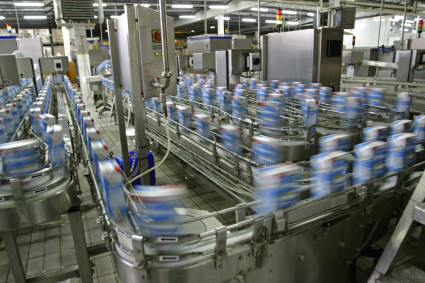Considerations for selecting Power Factor Correction
Power Factor Correction (PFC) is one way facility and plant managers can reduce energy costs by eliminating charges for inefficient power usage. In the previous article, we looked at power and maintenance cost benefits of PFC, improving load balancing and site Power Factor, along with different types of PFC. Here, we continue the discussion as we delve into active harmonic filtering and electronic VAR control, installation considerations along with potential payback benefits.
Active harmonic filtering and electronic VAR control
When looking at installing PFC, considering active harmonic filtering and electronic VAR control can be beneficial. Not only does harmonic filtering help to improve total Power Factor, it also reduces voltage distortion, current distortion and neutral-to-ground voltage which can cause equipment failure, downtime, frequent maintenance and costly repairs.
Harmonics occur when there is voltage and current harmonic distortion within an AC circuit. One of the reasons this occurs is an increased use of non-linear devices as the current drawn by these devices is not proportional to the supplied voltage.
Active Harmonic Filtering (AHF) is a method of mitigating the damaging effects of harmonics. It does this by continuously monitoring the harmonic current being produced and generating an adaptive waveform that cancels the harmonics.
Schneider Electric is one equipment vendor with active harmonic filtering and electronic VAR control products on the market, their AccuSine PFV+ is an Electronic VAR Compensation (EVC) that uses multi-level IGBT technology with an advanced control systems platform to perform PFC and flicker mitigation.
As it has an ultra-fast response, resonance free and provides an infinite resolution of compensation compared to conventional PFC solutions, it is ideal for PFC applications where there is high voltage distortion or dynamic fast changing loads.
Other products in the AccuSine product line including PCSn and PCS+ are flexible and high performance solutions by providing harmonic mitigation and PFC with load balancing. AccuSine PCS+ is specifically designed for harsh electrical conditions and heavy industrial applications including mission critical systems.
In addition to 3-phase mitigation, AccuSine PCSn has the ability to compensate for neutral harmonic currents, typically present in building and commercial environments where single-phase non-linear loads are present.

Installation considerations
When deciding to install a PFC solution at your building or plant, you will need to consider what unit will best meet the site requirements, some of these considerations are outlined below:
Load type
For applications where there are many large motors in use, one capacitor per motor is usually the most economical solution as they can be switched together. However, for applications where there are many small motors, the motors can be grouped and a single capacitor installed at a central point in the distribution system. Where both large and small motors are used, both capacitor installation methods can be used.
Load size
Depending on the facility size and load requirements, different PFC solutions will be more suitable. For facilities with large loads, using a combination of individual and group loads and banks of fixed and automatically-switched capacitor units would be suitable. Whereas smaller facilities may only need a capacitor at the control board.
Load consistency
Fixed capacitors are the most economic for facilities operating 24/7 and have a constant load demand. However, switched units will be more suitable for facilities operating only part of the time, such as during working hours five days a week, to decrease capacitance when load is reduced.
Load capacity
Power Factor Correction should be applied at the load if feeders or transformers are overloaded, or additional load will be added to an already loaded system. Capacitor banks can be installed at main feeders if the loads are generally stable throughout the site, or automatic switching installed if the loads vary and the site is required to stay within specific power factor criteria.

Payback and ongoing costs
Payback
The payback and return on investment for any PFC equipment will be determined by the utility tariff for power factor and the specific equipment chosen. If designed correctly, a PFC system has the potential to have a payback within two years.
Maintenance
PFC equipment does require maintenance and servicing, with the time between maintenance dependent on how critical the power factor needs to be controlled, maintenance may be required anywhere from once to several times a year.
Getting the PFC equipment regularly maintained is important, since capacitors deteriorate over time as the dielectric inside breaks down gradually when it is switched, as well as stress placed on them from external events. As PFC equipment such as capacitors deteriorate, the Power Factor of the application will become less efficient so will cause an increase in power requirements which results in higher power costs.

Energy audit
Before considering whether a PFC system will benefit a particular site, it is important to have an energy audit carried out to make sure that PFC is the best option for your needs. This audit will also highlight if there are other areas where energy savings can be found, especially when aging equipment is causing power wastage or even the process itself may be improved by utilising the latest in modern technology with more efficient equipment or systems.
Experience in energy management solutions
Automation IT’s engineers are degree qualified and experienced in implementing a range of energy management solutions, including PFC. Unlike other systems engineering companies, Automation IT is vendor neutral and it is able to assess the application and suggest a solution that is tailored to individual requirements. The outcome is a complete end-to-end solution that ensures the client gets the most efficient use out of their equipment.
When considering brand specific experience, Automation IT is a Schneider Electric Critical Power EcoXpert Solution Partner so has access to the full suite of Schneider Electric Power Factor Correction equipment along with associated Energy Management System software including Power Monitoring Expert (PME) or Power SCADA Operations (PSO) where larger mission critical or life safety sites are involved, such as hospitals, airports, data centres and other infrastructure.

